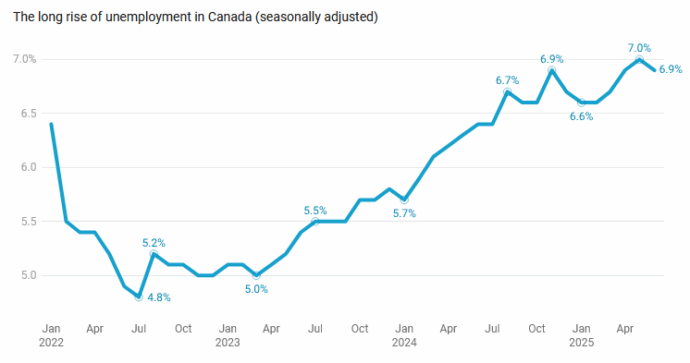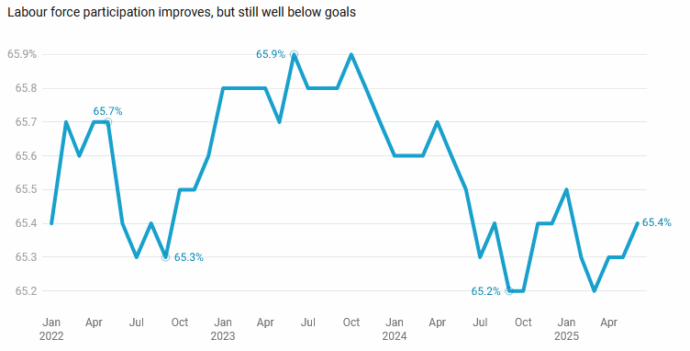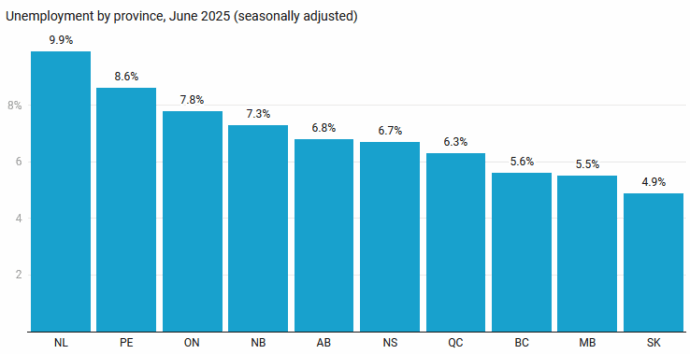 By Tom Parkin
By Tom Parkin
July 14th, 2025
BURLINGTON, ON
Seasonally adjusted, Ontario lost 10,000 full time jobs in June; now down 93,000 jobs since January.

The long rise of unemployment in Canada (seasonally adjusted)
The seasonally adjusted unemployment rate among Canadians 15 years and older fell 0.1 percentage points in June after rising for much of the past 48 months, according to Statistics Canada’s Labour Force Survey released Friday.
Over the past two years the jobless rate has had several brief improvements only to continue its rise. June’s turn could mark an inflection point or be just a blimp to the long-term upward trend.
The seasonally adjusted labour market participation rate, which includes those with a job and those looking for one, also improved by 0.1 percentage point, rising to 65.4 per cent among those 15 years of age and older. A return of workers to the job market and suggests an increase in worker optimism in the labour market.
However, the participation rate is still below the 65.9 per cent peak in summer 2023.

10,000 fewer full time Ontario jobs in June
The number of seasonally adjusted full time workers increased nationally in June, though jobs fell in several provinces, including Ontario and Quebec.
Statistics Canada data shows a return of Ontario job losses in June after a brief respite in May. In June the province had 93,000 fewer full time jobs than January and employment is now at a level lower than April 2024.

Ontario GDP growth lagged the rest of Canada throughout 2024 and employment numbers began to stall in August 2023. Ontario’s unemployment rate has been higher than the national rate every month for 26 months, since April 2023.
Ontario continues to have the highest unemployment rate among the large provinces, with British Columbia holding the lowest unemployment rate among the four.

Unemployment by province, June 2025 (seasonally adjusted)















Parkin’s article reminds me of the statement by Harry Truman (with apologies to Benjamin Disraeli): “There are 3 kinds of lies–lies, damn lies, and statistics”. By comparing Ontario to BC, Parkin, ever the NDP shill, implies that the NDP government in BC is doing better than the Conservative government in Ontario on the unemployment file. Of course, Parkin conveniently fails to mention the major structural difference in the two economies–that Ontario is far more dependent on manufacturing, a sector that has suffered serious negative effects as a result of the Trump tariffs.